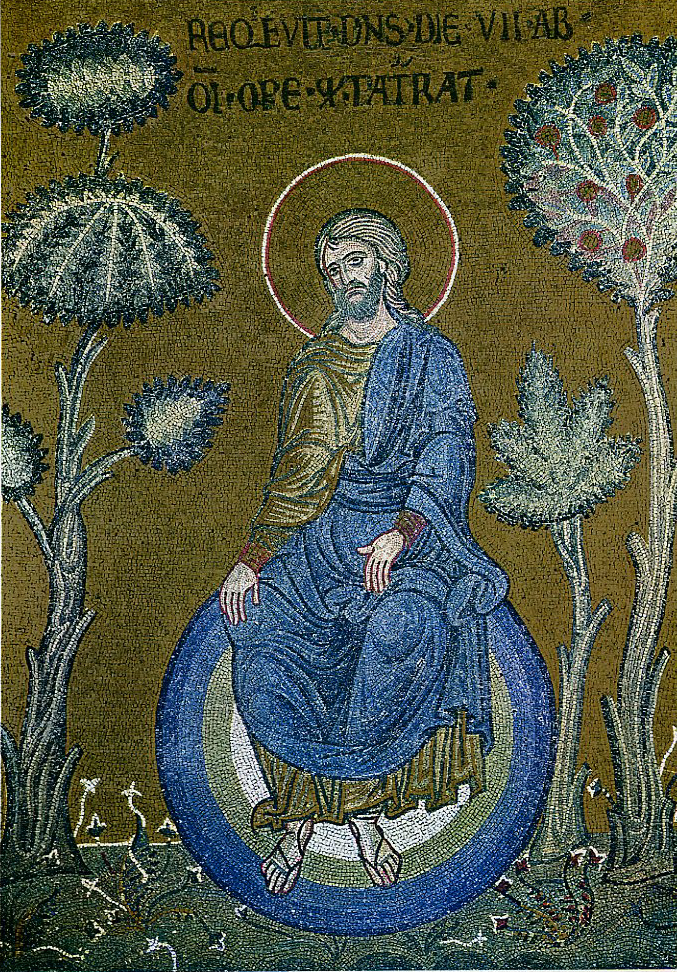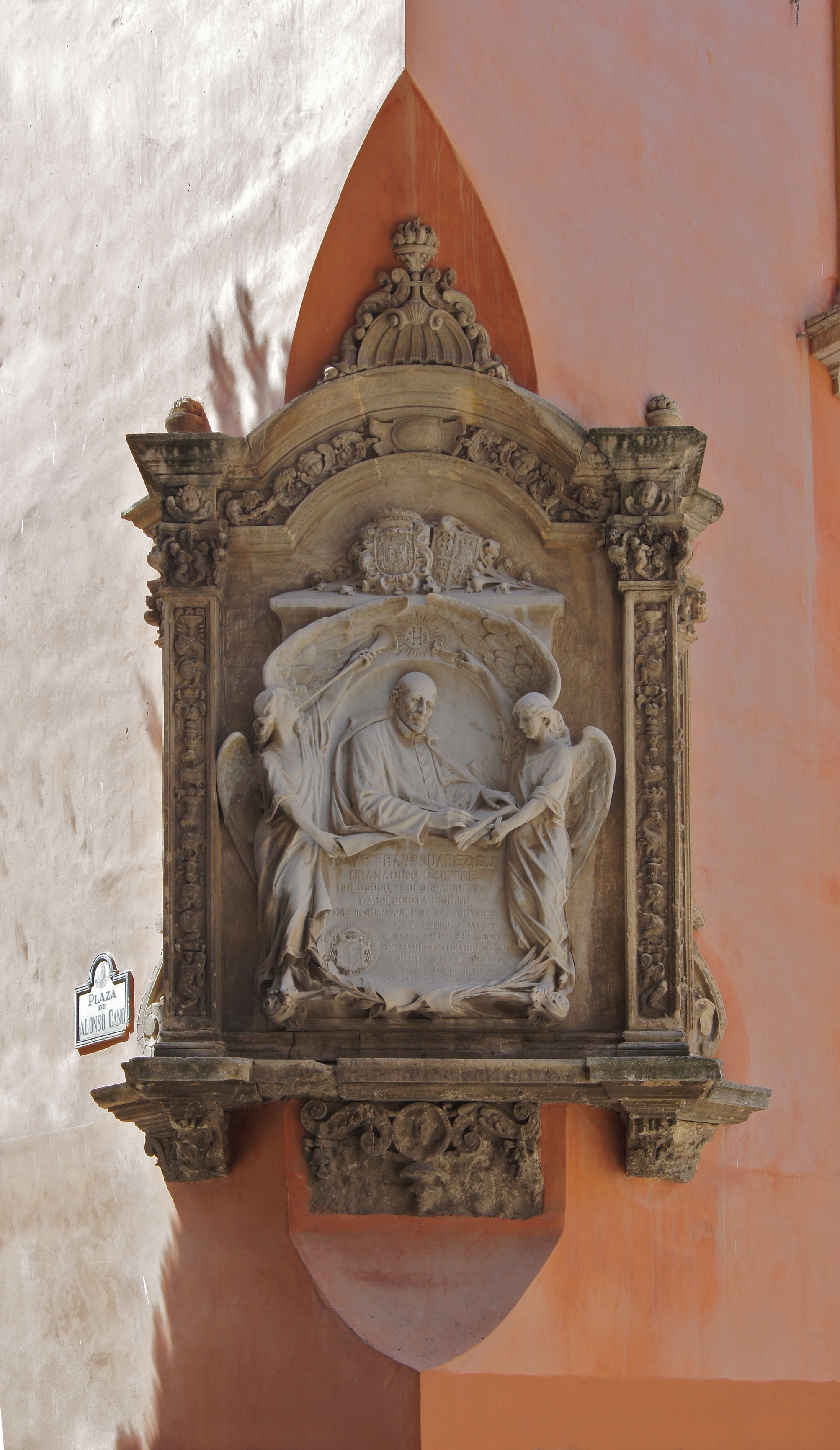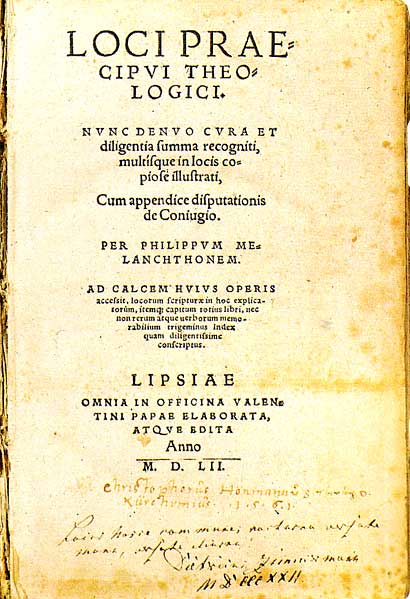|
Jakob Martini
Jakob Martini (17 October 1570 - 30 May 1649) was a German Lutheran theologian and philosopher. Biography Jakob Martini was born at Langenstein ( Halberstadt) in the hill country to the west of Magdeburg. Adam Martini, his father, was a pastor. He matriculated (enrolled) at the University of Wittenberg on 21 April 1587 and then, on 10 February 1590, switched to the recently established University of Helmstedt. Here he pursued the study of philosophy under the direction of the Lutheran metaphysician and aristotelian, his namesake Cornelius Martini. Returning to Wittenberg, in 1593 Jakob Martini acquired a Master's degree. Under Polykarp Leyser the Elder and Aegidius Hunnius he acquired growing insight into the study of Theology, and in 1597 he took a teaching position in Norden (north of Emden, and along the coast to the west of present-day Bremerhaven) which also came with a pastoral appointment. In 1602 he was called back to Wittenberg and appointed to ... [...More Info...] [...Related Items...] OR: [Wikipedia] [Google] [Baidu] |
Emden
Emden () is an independent city and seaport in Lower Saxony in the northwest of Germany, on the river Ems. It is the main city of the region of East Frisia and, in 2011, had a total population of 51,528. History The exact founding date of Emden is unknown, but it has existed at least since the 8th century. Older names for Emden are Setutanda, Amuthon, Embda, Emda, Embden and Embderland. Town privilege and the town's coat of arms, the ''Engelke up de Muer'' (The Little Angel on the Wall) was granted by Emperor Maximilian I in 1495. In the 16th century, Emden briefly became an important centre for the Protestant Reformation under the rule of Countess Anna von Oldenburg who was determined to find a religious "third way" between Lutheranism and Catholicism. In 1542 she invited the Polish noble John Laski (or ''Johannes a Lasco'') to become pastor of a Protestant church at Emden; and for 7 years he continued to spread the new religion around the area of East Frisia. However, ... [...More Info...] [...Related Items...] OR: [Wikipedia] [Google] [Baidu] |
University Of Giessen
University of Giessen, official name Justus Liebig University Giessen (german: Justus-Liebig-Universität Gießen), is a large public research university in Giessen, Hesse, Germany. It is named after its most famous faculty member, Justus von Liebig, the founder of modern agricultural chemistry and inventor of artificial fertiliser. It covers the areas of arts/humanities, business, dentistry, economics, law, medicine, science, social sciences, and veterinary medicine. Its university hospital, which has two sites, Giessen and Marburg (the latter of which is the teaching hospital of the University of Marburg), is the only private university hospital in Germany. History The University of Giessen is among the oldest institutions of higher educations in the German-speaking world. It was founded in 1607 as a Lutheran university in the city of Giessen in Hesse-Darmstadt because the all-Hessian ''Landesuniversität'' (the nearby University of Marburg (''Philipps-Universität Marburg'') ... [...More Info...] [...Related Items...] OR: [Wikipedia] [Google] [Baidu] |
Pre-existence Of Christ
The pre-existence of Christ asserts the existence of Christ before his incarnation as Jesus. One of the relevant Bible passages is where, in the Trinitarian interpretation, Christ is identified with a pre-existent divine hypostasis (substantive reality) called the Logos or Word. There are nontrinitarian views that question the aspect of personal pre-existence or the aspect of divinity or both. More particularly, John 1:15,18 says: This doctrine is supported in when Jesus refers to the glory which he had with the Father "before the world existed" during the Farewell Discourse.''Creation and Christology'' by Masanobu Endo 2002 page 233 also refers to the Father loving Jesus "before the foundation of the world". Nicene Christianity The pre-existence of Christ is a central tenet of mainstream Christianity. Most mainstream churches that accept the Nicene Creed consider the nature of Christ's pre-existence as the divine hypostasis called the Logos or Word, described in , whi ... [...More Info...] [...Related Items...] OR: [Wikipedia] [Google] [Baidu] |
Nontrinitarianism
Nontrinitarianism is a form of Christianity that rejects the mainstream Christian doctrine of the Trinity—the belief that God is three distinct hypostases or persons who are coeternal, coequal, and indivisibly united in one being, or essence (from the Ancient Greek ). Certain religious groups that emerged during the Protestant Reformation have historically been known as antitrinitarian. According to churches that consider the decisions of ecumenical councils final, trinitarianism was definitively declared to be Christian doctrine at the 4th-century ecumenical councils, that of the First Council of Nicaea (325), which declared the full divinity of the Son, and the First Council of Constantinople (381), which declared the divinity of the Holy Spirit. In terms of number of adherents, nontrinitarian denominations comprise a small minority of modern Christians. After the denominations in the Oneness Pentecostal movement, the largest nontrinitarian Christian denominations ar ... [...More Info...] [...Related Items...] OR: [Wikipedia] [Google] [Baidu] |
Socinianism
Socinianism () is a nontrinitarian belief system deemed heretical by the Catholic Church and other Christian traditions. Named after the Italian theologians Lelio Sozzini (Latin: Laelius Socinus) and Fausto Sozzini (Latin: Faustus Socinus), uncle and nephew, respectively, it was developed among the Polish Brethren in the Polish Reformed Church during the 16th and 17th centuries and embraced by the Unitarian Church of Transylvania during the same period. It is most famous for its Non-trinitarian Christology but contains a number of other heretical beliefs as well. Origins The ideas of Socinianism date from the wing of the Protestant Reformation known as the Radical Reformation and have their root in the Italian Anabaptist movement of the 1540s, such as the anti-trinitarian Council of Venice in 1550. Lelio Sozzini was the first of the Italian anti-trinitarians to go beyond Arian beliefs in print and deny the pre-existence of Christ in his ''Brevis explicatio in primum Johannis c ... [...More Info...] [...Related Items...] OR: [Wikipedia] [Google] [Baidu] |
Francisco Suárez
Francisco Suárez, (5 January 1548 – 25 September 1617) was a Spanish Jesuit priest, philosopher and theologian, one of the leading figures of the School of Salamanca movement, and generally regarded among the greatest scholastics after Thomas Aquinas. His work is considered a turning point in the history of second scholasticism, marking the transition from its Renaissance to its Baroque phases. According to Christopher Shields and Daniel Schwartz, "figures as distinct from one another in place, time, and philosophical orientation as Leibniz, Grotius, Pufendorf, Schopenhauer and Heidegger, all found reason to cite him as a source of inspiration and influence." Life and career Francisco Suárez, who had Jewish ( converso) ancestry, was born in Granada, Andalusia (southern Spain), on 5 January 1548. After 3 years of preliminary studies from age 10 onwards, in 1561 Suárez matriculated at the University of Salamanca, and studied law. In 1564, at age sixteen, Suárez entered the ... [...More Info...] [...Related Items...] OR: [Wikipedia] [Google] [Baidu] |
School Of Salamanca
The School of Salamanca ( es, Escuela de Salamanca) is the Renaissance of thought in diverse intellectual areas by Spanish theologians, rooted in the intellectual and pedagogical work of Francisco de Vitoria. From the beginning of the 16th century the traditional Catholic conception of man and of his relation to God and to the world had been assaulted by the rise of humanism, by the Protestant Reformation and by the new geographical discoveries and their consequences. These new problems were addressed by the School of Salamanca. The name refers to the University of Salamanca, where de Vitoria and other members of the school were based. The juridical doctrine of the School of Salamanca represented the end of medieval concepts of law, with a revindication of liberty not habitual in Europe of that time. The natural rights of man came to be, in one form or another, the center of attention, including rights as a corporeal being (right to life, economic rights such as the right to o ... [...More Info...] [...Related Items...] OR: [Wikipedia] [Google] [Baidu] |
Catholic Church
The Catholic Church, also known as the Roman Catholic Church, is the largest Christian church, with 1.3 billion baptized Catholics worldwide . It is among the world's oldest and largest international institutions, and has played a prominent role in the history and development of Western civilization.O'Collins, p. v (preface). The church consists of 24 ''sui iuris'' churches, including the Latin Church and 23 Eastern Catholic Churches, which comprise almost 3,500 dioceses and eparchies located around the world. The pope, who is the bishop of Rome, is the chief pastor of the church. The bishopric of Rome, known as the Holy See, is the central governing authority of the church. The administrative body of the Holy See, the Roman Curia, has its principal offices in Vatican City, a small enclave of the Italian city of Rome, of which the pope is head of state. The core beliefs of Catholicism are found in the Nicene Creed. The Catholic Church teaches that it is the on ... [...More Info...] [...Related Items...] OR: [Wikipedia] [Google] [Baidu] |
Council Of Trent
The Council of Trent ( la, Concilium Tridentinum), held between 1545 and 1563 in Trento, Trent (or Trento), now in northern Italian Peninsula, Italy, was the 19th ecumenical council of the Catholic Church. Prompted by the Protestant Reformation, it has been described as the embodiment of the Counter-Reformation."Trent, Council of" in Cross, F. L. (ed.) ''The Oxford Dictionary of the Christian Church'', Oxford University Press, 2005 (). The Council issued condemnations of what it defined to be Heresy, heresies committed by proponents of Protestantism, and also issued key statements and clarifications of the Church's doctrine and teachings, including scripture, the biblical canon, sacred tradition, original sin, Justification (theology), justification, salvation, the Sacraments of the Catholic Church, sacraments, the Mass (liturgy), Mass, and the Veneration, veneration of saints.Wetterau, Bruce. ''World History''. New York: Henry Holt and Company, 1994. The Council met for twenty- ... [...More Info...] [...Related Items...] OR: [Wikipedia] [Google] [Baidu] |
Jacopo Zabarella
Giacomo (or Jacopo) Zabarella (5 September 1533 – 15 October 1589) was an Italian Aristotelian philosopher and logician. Life Zabarella was born into a noble Paduan family. He received a humanist education and entered the University of Padua, where he received a doctorate in 1553. His teachers included Francesco Robortello in humanities, Bernardino Tomitano in logic, Marcantonio Genua in physics and metaphysics, and Pietro Catena in mathematics. In 1564 he succeeded Tomitano in a chair of logic. In 1577 he was promoted to the first extraordinary chair of natural philosophy. He died in Padua at the age of 56 in 1589. His entire teaching career was spent at his native university. His successor was Cesare Cremonini. Work Zabarella's work reflects his teaching in the Aristotelian tradition. His first published work was ''Opera logica'' (Venice 1578), followed by ''Tabula logicae'' (1578). His commentary on Aristotle's ''Posterior Analytics'' appeared in 1582. His great wo ... [...More Info...] [...Related Items...] OR: [Wikipedia] [Google] [Baidu] |
Lutheran Orthodoxy
Lutheran orthodoxy was an era in the history of Lutheranism, which began in 1580 from the writing of the ''Book of Concord'' and ended at the Age of Enlightenment. Lutheran orthodoxy was paralleled by similar eras in Calvinism and tridentine Roman Catholicism after the Counter-Reformation. Lutheran scholasticism was a theological method that gradually developed during the era of Lutheran orthodoxy. Theologians used the neo-Aristotelian form of presentation, already popular in academia, in their writings and lectures. They defined the Lutheran faith and defended it against the polemics of opposing parties. History Martin Luther died in 1546, and Philipp Melanchthon in 1560. After the death of Luther came the period of the Schmalkaldic War and disputes among Crypto-Calvinists, Philippists, Sacramentarians, Ubiquitarians, and Gnesio-Lutherans. Early orthodoxy: 1580–1600 The ''Book of Concord'' gave inner unity to Lutheranism, which had many controversies, mostly between Gnesi ... [...More Info...] [...Related Items...] OR: [Wikipedia] [Google] [Baidu] |






.jpg)

